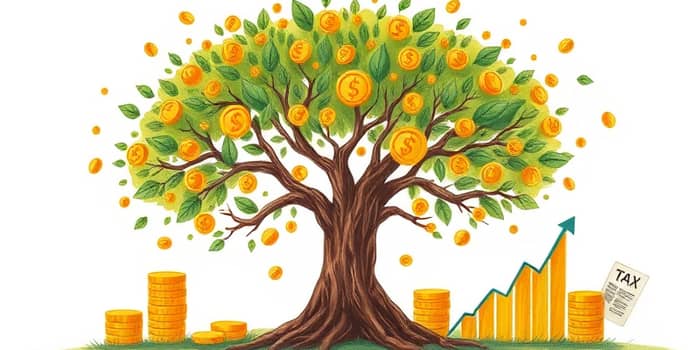
In today’s complex tax environment, understanding the tools and strategies that help you keep more of what you earn is essential. By focusing on the most impactful tactics, investors can minimize taxes and maximize net gains over the long term.
As lawmakers adjust brackets, deduction limits, and credits for 2025, staying informed and proactive will make the difference between average returns and truly transformative wealth accumulation.
Every dollar paid in taxes is a dollar that doesn’t compound in your portfolio. Over decades, those lost gains can add up to hundreds of thousands—or even millions—of dollars.
Prioritizing tax efficiency isn’t just about saving money today; it’s about harnessing the full power of compounding to build lasting wealth. With careful planning and strategic execution, investors can tilt the scales in their favor.
The foundation of any tax-efficient plan is maximizing contributions to accounts that offer immediate or future tax benefits. For 2025, the IRS has set the following limits:
Imagine a 30-year-old contributing consistently to a 401(k) with a 5% employer match on a $50,000 salary, growing wages at 2.4% annually. Thanks to the compounding power of tax-deferred vehicles, that nest egg could approach $2 million by retirement.
Once you’ve maxed out limits, the next step is placing the right assets in the right accounts. This approach preserves tax advantages and reduces drag on returns.
Beyond account selection, the choice of specific investments can further reduce your tax bill. Consider:
Knowing how different income streams are taxed helps you plan which investments to hold where:
For single filers in 2025, federal brackets include 10% up to $11,925, 12% up to $48,475, and 22% up to $103,350, with higher thresholds for upper brackets. Mapping your expected distributions against these brackets can yield sizable tax savings.
When markets dip, deliberately harvesting losses in your taxable account can offset gains and reduce your current tax liability. You may then reinvest in similar assets after a brief waiting period, maintaining market exposure while offsetting gains and lowering taxable income.
Holding a mix of pre-tax, post-tax, and taxable assets offers flexibility in retirement. You can draw from accounts strategically, based on your tax bracket in a given year.
Early in your career, favor Roth contributions while your income is lower. As earnings climb, shift to traditional accounts to maximize deductions. This layered approach is known as tax diversification.
Don’t overlook credits that directly slash your tax bill. Low- to moderate-income earners may qualify for:
Additional credits for clean energy investments and foreign-earned income exclusions can further enhance your tax profile.
To ensure you’re poised for success, adopt these best practices:
Tax laws evolve, and inflation adjustments change the landscape each year. By staying informed and revisiting your strategy at least annually, you can review your portfolio’s tax efficiency annually and adapt to new rules.
Consulting a qualified financial advisor or tax professional can uncover overlooked opportunities and ensure you’re making the most of every tax-advantaged vehicle available. In a world where every basis point counts, proactive planning is your greatest ally in building wealth.
References













